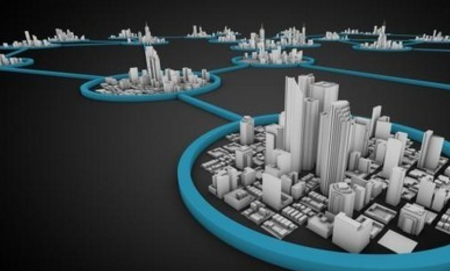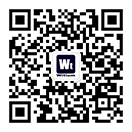The United Nations predicts that by 2050, two-thirds of the world’s population will live in cities. Due to this trend, coupled with the rise in the world's total population and life expectancy, today's urban population is tens or even hundreds of times a century ago.
However, the urban occupied land area has not increased by the same amount, resulting in more and more urban population, including how to manage resources and waste, how to effectively pass, how to maintain safety, and how to maintain roads, bridges and street lamps. And other important infrastructure. The solution to these problems is to collect and provide more useful information through the Internet of Things.
Aruba's 2017 "Internet of Things: Today and Tomorrow" report pointed out that many of the city agencies surveyed are using the Internet of Things to save costs and create smart cities. They connect building security systems (57%), street lights (32%) and vehicles (20%) through the Internet of Things to create a technology integration environment that supports future smart cities; the most popular applications for the Internet of Things are for the entire Remote monitoring and control of equipment within the city.
In 2003, the City of London adopted a radio frequency identification (RFID)-based smart card Oyster Card, operated by Hewlett Packard Enterprise. Since the 1980s, the number of passengers on the London Underground has been increasing rapidly. The Oyster card has reduced London's congestion at traffic entrances and exits, and since its launch, the number of passengers has increased by more than 40%.
Beyond Smart City, Create Internet of Things Competitiveness
The Taipei City Government in Taiwan has a vision to transcend smart cities – to enhance the competitiveness of the Taipei Internet of Things industry.
In 2017, the Taipei City Government launched the first capital-level IoT experimental platform project in Asia. The plan is to use the entire Taipei City as an experimental field, and more than 80 production, research and research teams have been involved in the development of innovative applications to establish the Internet of Things. system. The application scenarios include smart parking: breaking the limits of traditional sensing, power and communication, and using the Internet of Things technology, combined with microwave sensing, low-power solar charging circuits, and big data cloud data platform to develop smart city roadside parking. A bit management system to detect vehicle changes and provide real-time parking information.

The Taoyuan City Government, which has the function of electronic money package, electronic transportation ticket, library card, campus student card and bonus point, was selected as the “2017 Global 21 Smart City” Taoyuan City Government. Build and integrate IoT related services. In January 2017, it led the whole Taiwan, using the 4G LTE network of the telecom industry to conduct real-time verification of the NB-IoT (Narrowband Internet of Things) standard in the outdoor farmhouse of Taoyuan City, and to carry out outdoor atmospheric pressure of the farmhouse through the Internet of Things management platform. The integration and analysis of data such as humidity and temperature will promote the further development of Taiwan's refined agriculture.
Smarter, considerate, real-time medical services
The healthcare industry is one of the most promising areas for IoT applications. The "Internet of Things: Today and Tomorrow" report pointed out that 6 out of 10 medical institutions surveyed have adopted the Internet of Things, and patient monitors (64%) and X-ray imaging equipment (41%) in major equipment have been used. Connected to the network; the biggest benefit of the industry using the Internet of Things is the use of sensors to monitor and maintain medical devices.
In addition, one of the biggest and least noticeable issues in modern hospitals is figuring out how to get to where you are going, or "finding the way." When people get lost in the hospital, they can cause pressure and waste hospital money. Outpatients and family members visiting patients are not familiar with hospitals and are already under pressure, making it difficult to process information in this situation. One of the world's leading paediatric hospitals, Boston Children's Hospital, has used the Internet of Things to solve this problem.
Boston Children's Hospital processes approximately 25,000 inpatients, 500,000 outpatients per year, and has 12 five-story buildings with an area of over 300,000 square feet and is accessed via five elevators. In 2012, in order to find a way to find a complex building, the hospital developed a free smartphone app called MyWay. In fact, the hospital only took a few months to develop the application using a Meridian mobile application platform provided by Aruba.
MyWay uses GPS to sense the location of visitors or patients and direct them to their destination; it also shows the fastest route to facilities such as the washroom, parking lot and information desk. One of the most important features of this program is that hospital staff can update immediately whenever there is a change in the hospital. For example, if the elevator fails or the corridor is closed due to construction, MyWay can automatically choose another route. In the first six months alone, 4,500 patients at Boston Children's Hospital downloaded the app, and 65% said they improved their hospital experience.
"Smart medical care is an inevitable development direction. We can't wait until the demand appears, we must start preparing now to provide the most complete service." Xu Tiancheng, executive officer and director of the information department of the Changji International Information System .
The Taiwan Changhua Christian Hospital System, which has a fairly large and long-term vision in the field of smart healthcare, introduced the concept of Smart Hospital in 2014, allowing doctors to connect to the back-end medical system using smart mobile devices, and to check the patient's medical records at any time. data. Leading the whole station in 2015, it became the first medical center to fully introduce the bedside intelligent control system. The bedside control platform utilizes a wireless network to provide information and emergency call services, and to provide the services required by patients in real time.
One of the tools to achieve this goal is the mobile care car. The mobile care car is like a computer that can be pushed away. At the same time, it also adds a barcode scanner, a barcode printer, a card reader, etc., and connects to the back-end application server through the wireless network architecture. The nursing staff can check the patient's time at any time. Information, giving the corresponding drugs, while checking the correctness of the doctor's advice and drugs in real time, not only can compare and record the state of the patients in real time, but also further improve the safety of medication.
In order to enhance the stability of the signal, Zhangji also introduced the concept of “Room AP”, and installed a hidden wireless base station in each ward to achieve the goal of completely seamless communication. In this way, the mobile care car will not be forced to stop at the door of the ward because of poor network signal, but can be directly pushed to the hospital bed to provide medical care for the patients, greatly improving the quality of medical care.
Welcome to glory? How to get started
The practical application of the Internet of Things has shown great prospects, and research in the world has also been confirmed. So, what is the good IoT implementation strategy? In addition to understanding and learning from others' experiences and choosing the right partner, Chen Qingyuan, senior technical manager of the Network Equipment Division of Aruba Taiwan, suggested the following five steps:
1. Examine the existing environment. Only by understanding your endpoint device and the solutions, infrastructure, etc. it operates can you develop the right strategy.
2. Make sure you get all the data available. From the data center to the edge of the network, modern wired and wireless technologies are used to connect any remote users and systems.
3. Establish a robust plan to maintain the security of your enterprise system and use detection devices with machine learning and artificial intelligence.
4. Use the power of knowledge. Collecting information from employees, customers, and users around the world through innovative solutions that transform user behavior into intelligent insights that increase revenue.
5. Improve profitability. Introduce intelligent solutions that aggregate and analyze collected data to maximize the benefits of employees, customers, processes and supply chains.
Help companies reduce costs, increase efficiency, save energy, and reduce emissions

400-005-2939

WeChat public number
 Public Security Record No.: 31011202008719
Public Security Record No.: 31011202008719